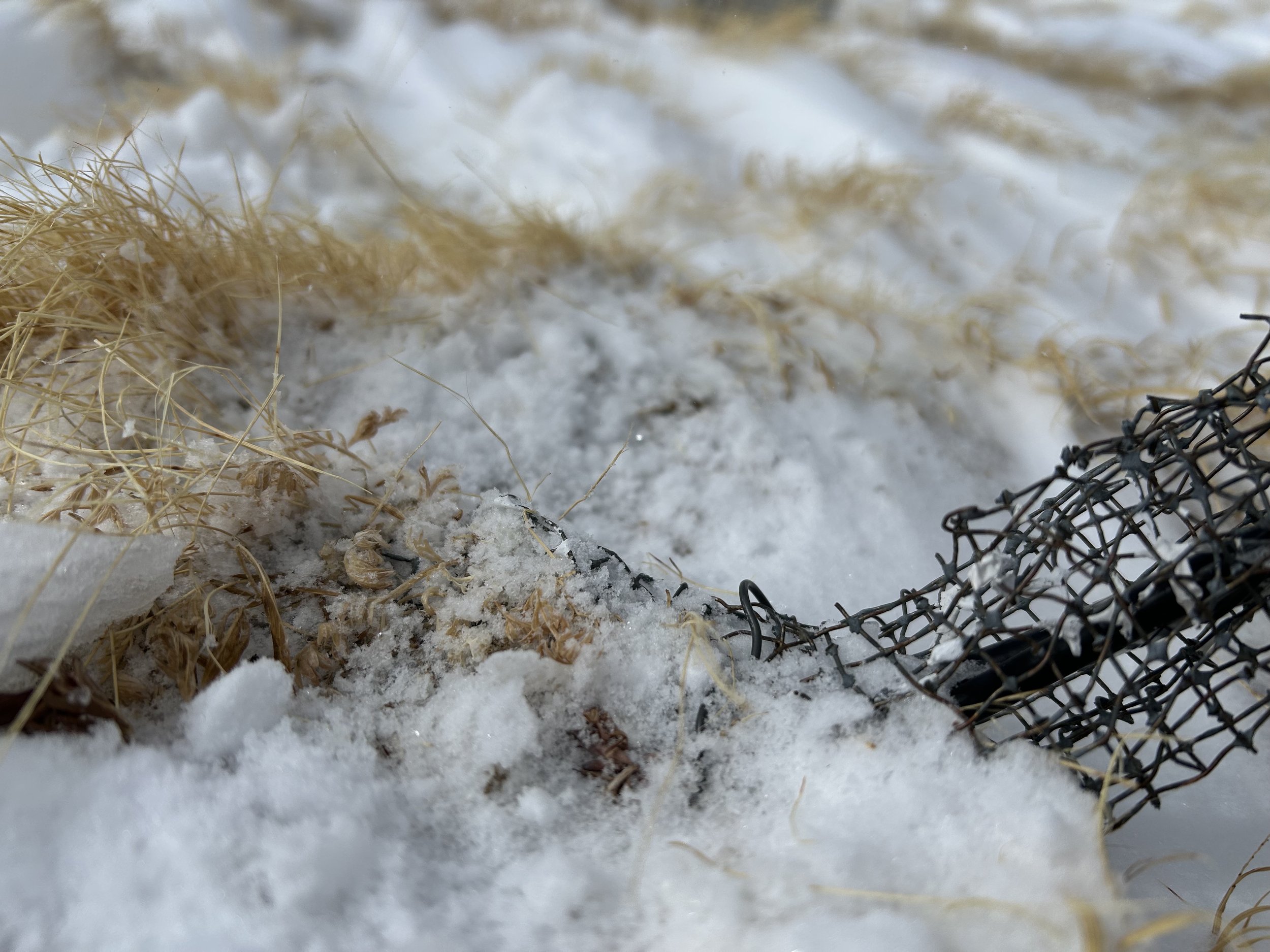Soil Moisture On Niwot Ridge
Temporal dynamics of soil moisture vary across Niwot Ridge, with wind-scoured areas drying early in the growing season while areas with snowbanks retain moisture for most of the summer (Hermes et al., 2020). This patchiness in soil moisture causes spatial variation in the rates of nitrogen mineralization, microbial biomass, and primary production (Chen et al., 2020; Schmidt et al., 2015). To learn more about soil moisture on Niwot Ridge, explore our data visualized below.
Temporal Variation in Alpine Soil Moisture
The below figure visualizes how volumetric soil moisture content in an alpine dry meadow on the Saddle of Niwot Ridge varies by month. The black line shows soil moisture data from 2021, and shading indicates the 10th through 90th quantiles for a given day across the long-term soil moisture record (2000- Present).
Summer Soil Moisture Anomalies by Year
The figure below visualizes how summer (July through September) soil moisture deviates from average across the Niwot Ridge alpine soil moisture record. Data are from an alpine dry meadow located on the Saddle of Niwot Ridge.
about Soil Moisture Data from Niwot Ridge
Climate Station:
The Niwot Ridge LTER collects and curates long-term soil moisture records from a climate station in a dry alpine meadow on the Saddle of Niwot Ridge (Figs. 1 and 2). The Niwot Ridge Saddle is located 3.5 miles (5.6 km) east of the Continental Divide at an elevation of 11,565 ft (3525 m). The Saddle area is along a ridge-top, but in a shallow saddle between the east and west knolls.
Figure 1: Climate stations of the Niwot Ridge LTER. Blue stars indicate the location of the subalpine (C1), Saddle, and alpine (D1) climate stations.
Figure 2: The Saddle climate station in the alpine on Niwot Ridge.
Instrumentation and Data Collection:
Soil moisture measurements taken in the dry alpine meadow at the Saddle are from a Campell Scientific CS616 water content reflectometer (Fig. 3). This sensor measures volumetric water content (measured as percent water; mm of water per 100 mm of soil) across a soil depth of 0 to 20 cm below the ground surface. Measurements are taken adjacent to the Stevenson screen, which houses co-located air temperature measurements.
From 2000 to 2012, data were recorded using a Campbell Instruments CR23X data logger. Subsequently, data were recorded using a Campbell Instruments CR1000 data logger (Fig. 3). Maximum and minimum values were recorded instantaneously, with a sampling interval of 5 seconds. Daily means and totals were calculated from 17,280 individual measurements. The CR23X logger was programmed to generate both hourly and daily output. The CR1000 logger generated daily, hourly, and minute data until September 2014, and 10 minute and minute data thereafter.
Figure 3: The Campbell Scientific CS616 water content reflectometer. Photo by Campbell Scientific. https://www.campbellsci.com.au/cs616-new
Figure 4: A water content reflectometer buried in the field. The sensor cable is wrapped in hardware cloth to protect it from being chewed by rodents as it heads underground. Photo by Jen Morse.
How To Cite Figures and Data On this page
The Niwot Ridge LTER welcomes your use of the figures on this page when accompanied by the following citations:
Saddle Soil Moisture Figures and Data:
Morse, J. and M. Losleben. 2024. Climate data for saddle data loggers (CR23X and CR1000), 2000 - ongoing, daily. ver 9. Environmental Data Initiative. https://doi.org/10.6073/pasta/ca5099dbc88575dbe55c4fe5b14c61ed.
Click on the above link to further explore the soil moisture data package, which is hosted on the Environmental Data Initiative Data Portal. The data package includes detailed information about where and how Niwot Ridge soil moisture (and other co-located climate data) is recorded and processed.
Contact Us
If you have questions about the data presented on this page, please email the Niwot Ridge LTER. To learn more about research, education, and outreach conducted by the Niwot Ridge LTER, please visit our website.








